#Nishapur
Explore tagged Tumblr posts
Text

Old Mine of Turquoise in the Iranian city of Nishapur
3 notes
·
View notes
Text

Bird ceramic Plate, Nishapur, Iran, X and XI centuries AD.
25 notes
·
View notes
Text




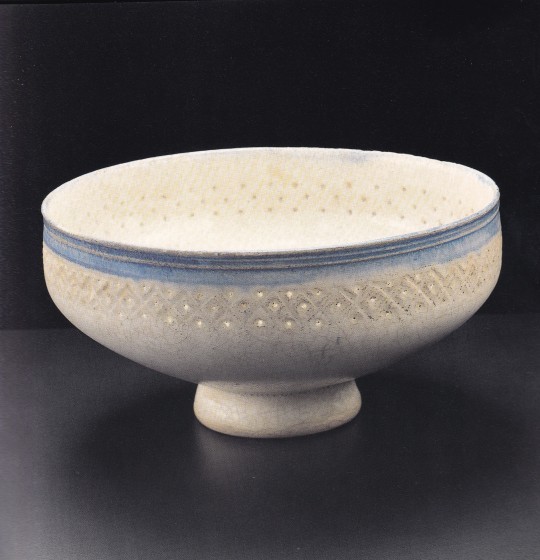






Ceramiche Persiane IX-XIV Secolo - Michail
a cura di Giovanni Curatola
Michail, Ancient & Islamic Pottery, Milano 1993, 103 pagine, 23x23cm,
euro 45,00
email if you want to buy [email protected]
Mostra Milano Michail c/o Galleria Garzanti Via Spiga 30
Cento emozioni nella preziosa ed elegante collezione di ceramiche antiche ideata e realizzata da Louise Michail e la figlia Narghes Sorgato, frutto di un’appassionata e competente ricerca di anni. Piccoli capolavori dell’arte fittile prodotti in Persia tra il IX e il XIV secolo. Rare ceramiche da Nishapur, con decorazioni a macchie, a stampo, epigrafiche, spesso recanti interessanti ornamentazioni a tema naturalistico, realizzate con la tecnica a lustro metallico sotto invetriatura. Uno scroscio di genialità ed estro proveniente dalle steppe centro-asiatiche, ricca di soluzioni tecniche sofisticate, frutto di sperimentazioni continue e originali. Cerchi immaginifici, monocromatici o in vivaci bicromie, per questi preziosi reperti medievali, ognuno dei quali ci racconta una storia, talvolta ci reca attraverso i secoli un messaggio a contenuto beneaugurale capace di emozionare come se fosse stato scritto ai giorni nostri.
02/01/24
#Ceramiche persiane#exhibition catalogue#Michail Milano 1993#ancient and islamic pottery#Nishapur#Giovanni Curatola#art books#designbooksmilano#fashionbooksmilano
9 notes
·
View notes
Text
Hierarquia e Mobilidade Social na Instituição Religiosa Medieval
Há amplas indicações sociais da existência de uma classe de profissionais especialistas em religião e assuntos relacionados, a saber, a lei e as devoções. Havia famílias de tais profissionais que persistiram por longos períodos, indicando uma convergência entre as classes sociais e a instituição da religião, a saber, a presença da primeira nas dobras da última. Um historiador da escola Maliki fez referência à família Al Hammad b. Zaid que liderou a escola Maliki tanto em riqueza quanto em jurisprudência no Iraque de meados do século II até o final do século V da Hégira. Temos relatos da família al-Shahrazuri que era responsável pela administração da lei na Síria e na Arábia nos séculos V e VI. A família Banu Sasra transmitiu de geração em geração conhecimento, jurisprudência e cargos em Damasco de meados do século V até o final do século VIII. Os Banu Jama‘a foram os principais aristocratas do conhecimento religioso e cargos legais no Egito e na Síria durante o período mameluco. Em Damasco, os Banu Qudama e Banu al-Munajja desempenharam um papel semelhante. O Magreb não ficou para trás desses desenvolvimentos e os Banu Marzuq são talvez um dos melhores exemplos dessa transmissão de conhecimento e autoridade religiosa dentro das famílias, enquanto também deve ser feita menção ao al-Shaykh na Arábia Saudita e suas políticas Wahhabitas predecessoras.
Tal conhecimento (‘ilm) era uma das especialidades básicas em Nishapur, que produziu alguns dos desenvolvimentos mais importantes na teologia muçulmana e na teoria do misticismo. Esta classe aristocrática, dividida entre Shafi‘is e Hanafis, apoiava seu poder legal e espiritual com grandes propriedades de terra que eram a base de suas relações com o estado e com o resto da sociedade. A chegada do período Seljuk pôs fim a esta posição autônoma desfrutada pela instituição religiosa dentro da sociedade e a instituição religiosa-intelectual foi anexada ao estado, com escolas sendo criadas e a produção de estudiosos cultos diretamente pelo estado. Isso teve o efeito de ao mesmo tempo ampliar e restringir o vínculo entre estudiosos e sociedade. Era mais amplo no sentido de que as madrassas cobriam as despesas de subsistência dos alunos com as receitas geradas pelo awqāf, permitindo assim que muitos alunos de origem social modesta ou pobre estudassem e ingressassem nas instituições devocionais e legais. O elo tornou-se mais restrito porque as madrassas fizeram da instituição social – sodalidade – de ‘ilm – um campo que abrange o culto e a administração do fiqh – um treinamento profissional baseado em instituição por meio de um itinerário definido, graças às madrassas, excluindo o que quer que tenha surgido fora da estrutura dessas escolas. Há muita falta de clareza, pois a pesquisa detalhada é apenas irregular. O que é certo é que após o período seljúcida e a fundação das madrassas – a primeira foi em Nishapur e a mais famosa foi a escola Nizamiyya em Bagdá – as instituições religiosas e científicas foram patrocinadas pelo estado, estabelecidas fora da rede de relações sociais. Mas seu funcionamento, no entanto, integrava elementos de redes de parentesco. Alguns exemplos dessa institucionalização centrada na família foram indicados. Antes do período seljúcida, ‘ilm tinha sido, em maior extensão, uma instituição privada com a família como sua estrutura institucional básica fora da administração da lei, e o patrocínio do estado como seu princípio organizador.
Quaisquer estudos disponíveis indicam que havia uma divisão hierárquica na instituição religiosa e intelectual, com escalões mais altos do sistema legal monopolizados por patrícios, nomeados pelo soberano. Aqueles que ocupavam cargos mais baixos, como juízes distritais e imãs em pequenas mesquitas, eram nomeados pelo qadi e enfrentavam um teto de vidro raramente violado. Essa hierarquia continuou, especialmente na Síria, e em menor extensão no Egito, durante todo o período otomano. Os estudiosos egípcios estavam conectados ao campo e às guildas comerciais, mais do que seus colegas na Síria, que estavam mais afastados das ordens inferiores.
Secularism in the Arab World: Contexts, Ideas and Consequences - Aziz Al-Azmeh
#islam#traducao-en-pt#cctranslations#secularismaw-aaa#maliquismo#nishapur#irã#hanafismo#xafeísmo#sunni#império seljúcida#maktab e madrasah
0 notes
Text

Em Nishapur
Um novo mausoléu foi inaugurado em 1961. Pretendia ser um símbolo da moderna arquitetura iraniana e da sua ligação às tradições culturais do país. Rodeado por um jardim permite que as flores continuem a cair sobre a campa do poeta.
A fotografia foi roubada à wikipedia.
0 notes
Text
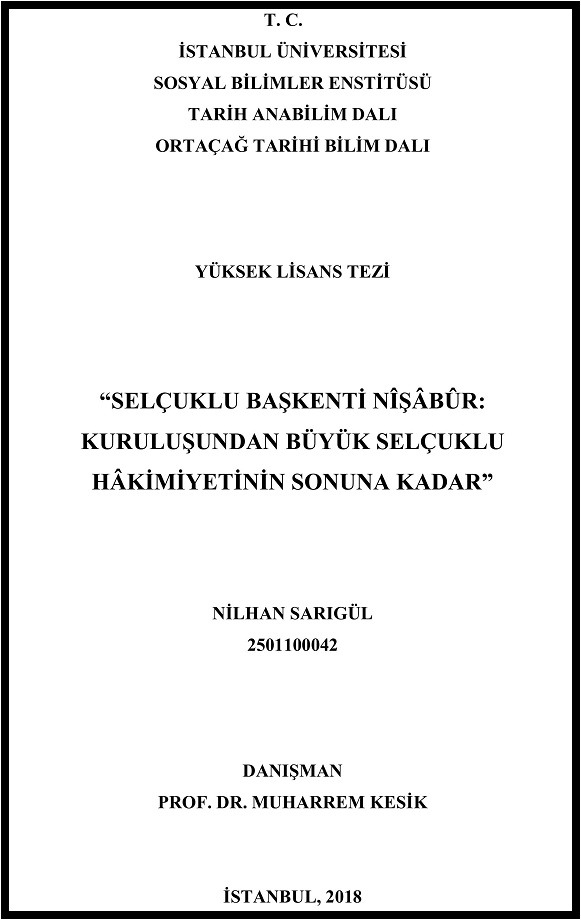
Nilhan Sarıgül. Selçuklu başkenti Nîşâbûr: kuruluşundan büyük Selçuklu hâkimiyetinin sonuna kadar. Yüksek lisans tezi (2018) https://www.avetruthbooks.com/2023/10/nilhan-sarigul-selcuklu-baskenti-nisabur-kurulusundan-buyuk-selcuklu-hakimiyetinin-sonuna-kadar-yuksek-lisans-tezi-2018.html
0 notes
Text
Drink the wine of mystic knowledge, but don’t then forget to keep your lips closed.
— ATTAR ⚜️ Love’s Alchemy: Poems from the Sufi Tradition, transl. by David Fideler & Sabrineh Fideler, (2010)
#Persian#فريد الدين العطار#Attar#Attar of Nishapur#Love’s Alchemy: Poems from the Sufi Tradition#David Fideler#Sabrineh Fideler#(2010)#Essence
124 notes
·
View notes
Text
#this album is conceptually based on Muṣībat-Nāma by attar of nishapur#fyrnask#atmospheric black metal#kenoma#favourite songs#that evil droning guitar is so tasteful
3 notes
·
View notes
Text
"I saw Love above faith or infidelity; I saw it bear no sign of doubt or certainty. Faithlessness, assurance, doubt, and religion I saw convene in the presence of Reason. Since I surpassed Reason by a hundred realms I can say I discern infidelity and faith. All the barriers along the Path are self-made. I found them similar to Alexander’s rampart. You shall be fully effaced upon the Path. I saw the road leading us closer to this. When I took up the task of description I saw the features with my bodily eyes. For every feature I annihilated I saw another one lying in ambush. When my soul transcended description I saw it drown in an ocean of flames. As my harvest burned in that ocean I saw the moon and the sun harvesting my crop. You could say the ocean was infinite. I saw the Paradise and the houris in it. When I traversed such an ocean I saw the Rakhsh of sun beneath a saddle. I considered the two worlds as a ring; I saw the heart as a gemstone upon that ring." -ʿAṭṭār of Nishapur
19 notes
·
View notes
Text
What shadow is ever separated from its maker? Do you see? The shadow and its maker are one and the same, so get over surfaces and delve into mysteries.
- Attar, The Conference of the Birds
30 notes
·
View notes
Text
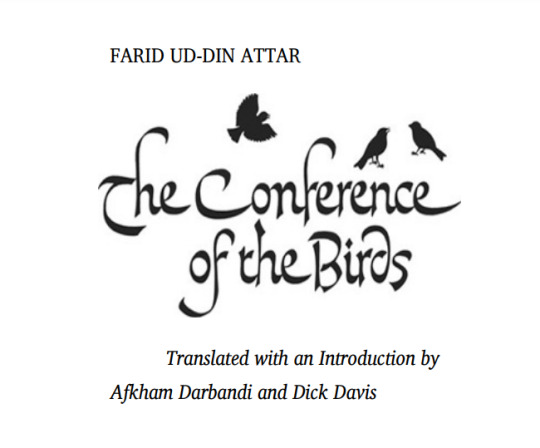
The Conference of the Birds (Manteq at-Tair)
#The Conference of the Birds#The Language of Birds#Sufi Poetry#Sufi Gnosis#Sufi Philosophy#Attar of Nishapur#Mantiq al-tair
2 notes
·
View notes
Text
Legendary Creatures: Simurgh
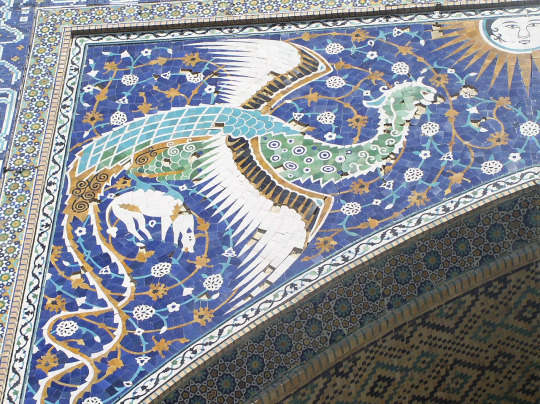
By Alaexis - Own work, CC BY-SA 2.5, https://commons.wikimedia.org/w/index.php?curid=2115489
A simurgh (سیمرغ, also spelled senmurv, simorgh, simorg, simurg, simoorg, simorq or simourv) is a Persian bird that is related to the phoenix that spans an area from Georgia, to Armenia, and the Byzantine Empire and other areas that were influenced by the Persian Empire.

By Unknown author - This file has been provided by the British Library from its digital collections.Catalogue entry: IOSM J.67, CC0, https://commons.wikimedia.org/w/index.php?curid=31453107
The word simurgh is related to the words meaning 'the bird of Saēna', a raptor, probably an eagle, falcon, or sparrowhawk as the Sanskrit śyenaḥ (श्येनः) meaning 'bird of prey'. Though it is also closely related to the phrase sī murğ (سی مرغ) that means 'thirty birds', which was used by Sufi poet Abū Ḥāmid bin Abū Bakr Ibrāhīm (c. 1145 – c. 1221; Persian: ابوحمید بن ابوبکر ابراهیم), better known by his pen-names Farīd ud-Dīn (فریدالدین) and ʿAṭṭār of Nishapur (عطار نیشاپوری) in his The Conference of the Birds as a word play.
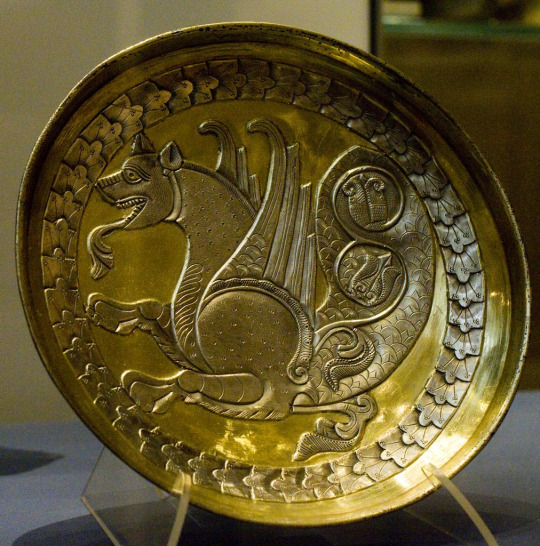
By Nickmard Khoey - https://www.flickr.com/photos/nickmard/2887513290/in/set-72157607483985460/, CC BY-SA 2.0, https://commons.wikimedia.org/w/index.php?curid=5619184
The simurgh is frequently depicted as a winged creature, large enough to carry an elephant or a whale, with the body of a peacock, head of a dog, and claws of lions. Sometimes, it has a human face. It is old enough that it 'had seen the destruction of the world three times over'. It also plunges itself into flames every 1,700 years, similar to phoenixes.

By Painting: Unknown 7th century artist.Photographer: undetermined - This file has been extracted from another file, Public Domain, https://commons.wikimedia.org/w/index.php?curid=95912662
They are benevolent, purifying land, bestowing fertility, mediating the union between the Earth and the sky by serving as a messenger. It lived in the Tree of Life in the middle of the world sea. When it flew away from the Tree of Life, the Tree shook so hard that it lost leaves, which became the seeds of every plant. It also expresses the divine mandate of kingship and priesthood.

By From the Sarai Albums. - http://www.ee.bilkent.edu.tr/~history/Pictures1/im16.jpg, Public Domain, https://commons.wikimedia.org/w/index.php?curid=5760173
Abul-Qâsem Ferdowsi Tusi (940-ابوالقاسم فردوسی توسی 1019/1025), also Firdawsi or Ferdowsi (فردوسی) wrote the most famous story about the simurgh in his Shahnameh (Book of Kings). In it, a prince named Zal, son of Saam, was born albino, causing his father to cast him out, believing him to be demonic. A simurgh rescues him and raises him, teaching him wisdom as they have all knowledge. When Sal was old enough, he wanted to rejoing humanity and the simurgh and the simurgh gave him three feathers to call her should he need her help. He married a woman named Rudaba who had a difficult labor with their first child. The simurgh responded to his call for help and taught him to perform a cesarean section.
112 notes
·
View notes
Text

Plate with Design of Arabic Inscription in Kufic Script, 10th century, Samanid dynasty, Persian, 819–1005, Nishapur, Khorasan province. Glazed and slip-painted earthenware.
Painted in the long, elegant strokes of Kufic script, this plate's inscription is among the most beautiful examples of calligraphy from the early Islamic period. The elegant inscription decrees that "Planning before work protects you from regret." The plate is one of a group of vessels that admonish the owners and their guests to be assiduous, careful, and virtuous in simple yet profound mottoes by which one might live a good life. The white slip body on which the calligraphy appears is related to Chinese porcelains and stonewares imported to Baghdad, the seat of power and commerce in the early Islamic world. The white slip, or liquefied clay, was painted over the surface of the vessel to mask its coarse body and to suggest coveted Eastern porcelains. Applying ornamental calligraphy to the expansive white surface created designs that were bold and appealing.
Courtesy Alain Truong
48 notes
·
View notes
Photo

Rumi
Jalal ad-Din Muhammad Rumi (also given as Jalal ad-did Muhammad Balkhi, best known as Rumi, l. 1207-1273 CE) was a Persian Islamic theologian and scholar but became famous as a mystical poet whose work focuses on the opportunity for a meaningful and elevated life through personal knowledge and love of God.
He was a devout Sunni Muslim and, even though his poetry emphasizes a transcendence above religious strictures and dogma, it is grounded in an Islamic worldview. Rumi's God is welcoming to all, however, no matter their professed faith, and one's desire to know and praise this God is all that is required for living a spiritual life.
He was born in Afghanistan or Tajikstan to well-educated, Persian-speaking parents and followed in his father's profession as a Muslim cleric, establishing himself as a well-respected scholar and theologian until he met the Sufi mystic Shams-i-Tabrizi (l. 1185-1248 CE) in 1244 CE and embraced the mystical aspects of Islam. After Shams disappeared in 1248 CE, Rumi searched for him until he realized that Shams' spirit was with him always, even if the man himself was not present, and began composing verse which he claimed to receive from this mystical union.
Rumi's poetry is characterized by a deep understanding of the human condition which recognizes the grief of loss as well as the ecstatic joy of love. The power of transcendent love, whether for another person or God, is central to his work and conveyed through images, symbols, and stories drawn from the Quran, the hadiths, Persian mythology, legend and lore, as well as specific tableaus of daily life.
He composed his verse by spinning in circles, receiving the images he put into words, and dictating these to a scribe, thereby developing the Sufi practice of the whirling dervish as a means of apprehending the Divine. He is considered one of the greatest Persian poets of the medieval era as well as one of the most influential in world literature and his works continue to be bestsellers in the present day.
Early Life & Name
Rumi was born in the city of Balkh in modern-day Afghanistan. It has been suggested that his birthplace was Vakhsu (also given as Wakhsh) in Tajikstan but Balkh is more probable as it is known that a large Persian-speaking community flourished there in the early 13th century CE and, more significantly, one version of his name signifies his place of origin – Balkhi – “from Balkh”.
Almost nothing is known of his mother, but his father, Bahauddin Walad, was a Muslim theologian and jurist with an interest in Sufism. Sufism is the mystical approach to Islam, which rejects dogmatic strictures in favor of a personal, intimate relationship with God. Sufism is not a sect of Islam, but a transcendent path of personal spiritual revelation based on Islamic understanding. Although many orthodox Muslims of the time (and still today) rejected Sufism as a heresy, the city of Balkh encouraged its development and supported Sufi masters. How deeply Rumi's father immersed himself in Sufism in unknown, but Rumi was instructed in the mystic aspects of Sufism by one of his father's former students, Burhanuddin Mahaqqiq, which lay the foundation for his later acceptance of this spiritual path.
When the Mongols invaded the region c. 1215 CE, Rumi's father gathered his family, as well as his disciples, and fled. On their travels, Rumi is said to have met the Sufi poet Attar of Nishapur (l. 1145-c. 1220 CE) who gave him one of his books which would exert considerable influence on the young man. Rumi's group does not seem to have had a definite destination in mind at first as they are said to have traveled through the regions of modern-day Iran, Iraq, and Arabia before settling in Konya, Anatolia (modern-day Turkey). By this time (c. 1228 CE), Rumi had been married twice and had three sons and a daughter. When his father died, Rumi took over his position as sheikh of the religious school in the community and continued his father's practices of preaching, teaching, observing religious rites and practices, and ministering to the poor.
His name, Rumi, comes from this period as Anatolia was still referred to as the province of the Byzantine Empire (the Eastern Roman Empire, 330-1453 CE) it had been until 1176 CE when most of it was lost to the Muslim Turks. Someone who came from Anatolia, therefore, was referenced as a rumi, meaning a Roman.
Continue reading...
34 notes
·
View notes
Text

Persian jug with painted bands of calligraphy and foliage from the city of Nishapur, dating back to 10th-12th centuries CE. Huntington Museum of Art, Huntington, WV.
Photo by Babylon Chronicle
215 notes
·
View notes
Text
malevolent poetry references: season 1
part 4: the voices

this is the first of multiple times that this phrase appears in the show. it appears to have originated from a medieval Persian fable, written by the Sufi poet Attar of Nishapur. the phrase was popularized in the west following an early nineteenth century translation and retelling of the story by Edward Fitzgerald.
part 5: the gift

this is a line from “Stopping by the Woods on a Snowy Evening” by the American poet Robert Frost. it was first published in 1923, eleven years before the events of malevolent.
part 8: the caves

the quotation here comes from “Cassilda’s Song”, a poem written by Robert W. Chambers as a preface to his 1895 book, The King in Yellow, a collection of short stories.
part 12: the end

this isn’t poetry, but it is a notable reference, because it is a quote from H.P. Lovecraft. the full quote is: “The process of delving into the black abyss is to me the keenest form of fascination.”
#*radio static*#malevolent#will definitely do this at least for season 2 since there’s more poetry in it and maybe the others as well!#arthur lester#john doe malevolent#malevolent poetry references
32 notes
·
View notes